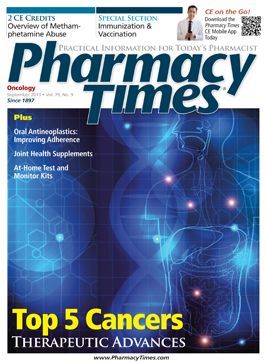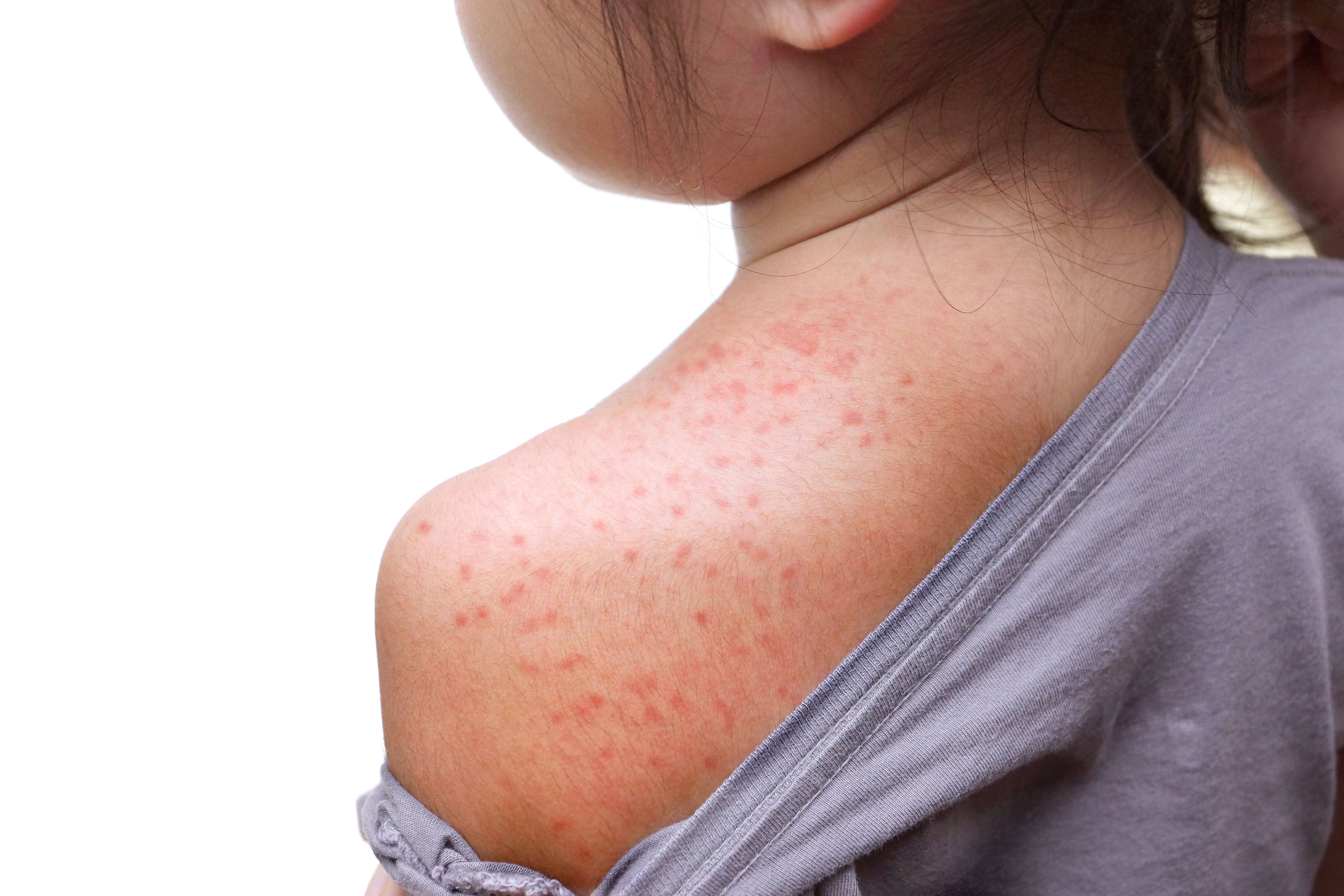Publication
Article
Pharmacy Times
Back-to-School Immunizations
Author(s):
There's a reason most school systems require proof of vaccination before students begin in the fall.
There's a reason most school systems require proof of vaccination before students begin in the fall.
Immunization programs protect individuals from contagious disease and, if promoted widely enough, protect entire communities. Successful programs have eradicated smallpox and almost eliminated polio. The Carter Center International Task Force for Disease Eradication believes that measles, mumps, rubella, lymphatic filariasis (a tropical roundworm disease), and cysticercosis (pork tapeworm) are potentially eradicable.1 Immunization programs always target children because they have robust immune systems and have not been exposed to many diseases. For that reason, most school systems require proof of vaccination before students begin in the fall.
Like Herding Cats
Despite many successes, immunizations still aren’t as powerful as they could be. The optimal vaccination rates for a population range from 85% to 95%, depending on the disease’s virulence, the vaccine’s effectiveness, and the specific target population. Diseases struggle to spread when this percentage of individuals has been vaccinated; this is called herd immunity.2 A number of barriers prevent the school-age population in the United States from reaching optimal vaccination rates:
- Systemic barriers (eg, inadequate supplies)
- Provider barriers (eg, clinicians may not administer multiple vaccines simultaneously)
- Parent and children barriers (eg, parents and/or children may fear vaccine side effects)
The online Table lists some ways pharmacists can address immunization barriers.
Table 1: Pharmacist Interventions that Increase Childhood Immunization Uptake
Systems interventions
- Identify clinics and providers that immunize under the CDC’s Vaccines for Children program, which provides free vaccines, and direct parents there.
- If your state allows pharmacists to immunize, become a certified immunizer.
Provider interventions
- Stay current on the CDC’s immunization schedules available at www.cdc.gov/vaccines/schedules/index.html.
- Understand how to order, store, and administer vaccines; in particular, stay abreast of new combination vaccines that reduce the number of necessary injections.
- Consider reminder/recall systems; many of these are part of office software.
- Address vaccine-related scares early; learn as much as possible and communicate with patients and parents calmly and rationally.
Patient and parent barriers
- Educate parents and children about the need to vaccinate.
- Encourage parents to maintain an immunization card (also called a shot record) and keep it with their children’s medical records.
- Offer or refer parents to a wallet-sized schedule, available at www.immunize.org/shop/record-cards.asp.
- Keep a list of immunization clinics that have convenient hours and locations.
- Counsel parents who travel abroad that measles is a growing threat, and encourage vaccination.
Starting Off on the Right Foot!
Children about to enter kindergarten, aged 4 to 6 years, need a number of immunizations, most of which are the final dose in a series that can begin weeks or months after birth10:
- DTaP (diphtheria, tetanus, and pertussis)
- MMR (measles, mumps, and rubella)
- IPV (inactivated polio vaccine)
- Varicella (chickenpox; first of 2 doses)
- Influenza
For children 7 years of age, the Centers for Disease Control and Prevention (CDC) continues to recommend the initiation of annual influenza immunization. At 11 or 12 years of age, children need a booster shot for tetanus, diphtheria, and pertussis. This is delivered using Tdap, which has a reduced dose of the diphtheria and pertussis vaccines. Meningococcal conjugate vaccine is not mandatory but is strongly recommended for children aged 11 to 12 years. (A booster shot should be given at 16 years of age.) Additionally, the CDC now recommends that at 11 or 12 years of age, boys and girls receive 3 doses of the human papillomavirus vaccine. Note that girls can receive either Gardasil (Merck) or Cervarix (GlaxoSmithKline), whereas boys can only receive Gardasil.
Children who have not been previously vaccinated for hepatitis A should also have this series of 2 vaccinations administered 6 months apart; this is very important for children with medical risk factors, but encourage parents to consider this vaccination even if the child has no risk factors.
Refer parents, teachers, and school nurses to the CDC’s website (www.cdc.gov/vaccines/schedules/index.html), which includes multiple user-friendly options (eg, to print pocket-sized immunization schedules, create a customized schedule of necessary vaccines) and allows users to order vaccine schedules.
Immunizing a Greater Percentage of the Population
To achieve success, pediatric immunization campaigns must reach almost all children. A decline in the immunization rates has experts worried. The CDC recently found that between January 1 and May 20, 2011, 222 cases of measles had been reported in the United States. This is the highest number reported since 1996. Most cases seemed to have come from exposure abroad, where measles is epidemic; the United Nations health agency attributes the outbreak, which is especially acute in France, to a failure to vaccinate all children.11 Recent pertussis outbreaks in the United States also concern authorities.12-15
Public policy (eg, school registration requirements) can encourage immunization, but for an immunization campaign to succeed, parents and health care providers must be engaged. Roughly 4% to 7% of parents are concerned enough about vaccines that they will not allow their children to receive them. Some parents are concerned about vaccines’ side effects, or they believe rumors that vaccines cause autism.16
Some parents aren’t immunization refusers, but they don’t make vaccinations a priority because they fail to understand vaccines’ importance, are overwhelmed by complex immunization schedules, or are too busy. Pharmacists can convince these parents to make vaccinations a priority. These parents don’t actively choose not to vaccinate their children; rather, they may only remember a vaccine if they are reminded that it’s due. Therefore, pharmacists can help parents by addressing adherence.16
It’s important to emphasize to parents that many immunizations prevent infections that were once prevalent but are now rare. Meningitis or pneumonia can strike children of any age and can be severe. In fact, some infections may occur so infrequently that health care providers may fail to recognize them, which could significantly delay treatment.16
Children fall behind on their immunization schedule for a number of reasons. Therefore, the CDC’s immunization chart includes a recommended “catch- up” schedule.
Adults who interact with children—parents, teachers, caregivers, and grandparents—must also ensure that their own vaccines are current. The 2 most important are Tdap (to avoid contracting pertussis and transmitting it to a child) and the influenza vaccine. Older adults who missed vaccinations as children also need to catch up.10
Conclusion
Children today receive approximately 2 dozen vaccinations before 2 years of age, which averages 1 shot per month of life. This schedule, while rigorous, prevents numerous deaths and disease incidents. Vaccination of each child in the United States, according to the current childhood immunization schedule, would prevent approximately 42,000 deaths and 20 million cases of disease.17
As this new school year begins, reach out to your student patients and ensure they’re up-to-date. Also ensure that you know the contraindications of vaccines and which vaccines can be administered simultaneously.
Ms. Wick is a visiting professor at the University of Connecticut School of Pharmacy and a certified pharmacist immunizer.
References
- The Carter Center. International Task Force for Disease Eradication. www.cartercenter.org/health/itfde/index.html. Accessed August 14, 2013.
- Lewin EB. A paradigm for the control of influenza. J Infect Dis. 2010;202:1619-1622.
- Kimmel SR, Burns IT, Wolfe RM, Zimmerman RK. Addressing immunization barriers, benefits, and risks. J Fam Pract. 2007;56(2 suppl vaccines):S61-S69.
- Gore P, Madhavan S, Carry D, et al. Predictors of childhood immunization completion in a rural population. Soc Sci Med. 1999;48:1011-1027.
- Centers for Disease Control and Prevention. Notice to readers: limited supply of meningococcal conjugate vaccine, recommendation to defer vaccination of persons aged 11-12 years. MMWR Mortal Wkly Rep. 2006;55:567-568. www.cdc.gov/mmwr/preview/mmwrhtml/mm5520a11.htm. Accessed August 14, 2013.
- Prislin R, Sawyer MH, Nader PR, Goerlitz M, De Guire M, Ho S. Provider-staff discrepancies in reported immunization knowledge and practices. Prey Med. 2002;34:554-561.
- Madlon-Kay D, Harper PG, Too many shots? parent, nurse, and physician attitudes toward multiple simultaneous childhood vaccinations. Arch Fam Med. 1994;3:610-613.
- Tierney CD, Yusuf H, McMahon SR, et al. Adoption of reminder and recall messages for immunizations by pediatricians and public health clinics. Pediatrics. 2003;112:1076-1082.
- Smailbegovic MS, Laing GJ, Bedford H. Why do parents decide against immunization? the effect of health beliefs and health professionals. Child Care Health Dev. 2003;29:303-311.
- Centers for Disease Control and Prevention. 2011 Child & Adolescent Immunization Schedules for persons aged 0-6 years, 7-18 years, and "catch-up schedule." www.cdc.gov/vaccines/schedules/index.html. Accessed August 14, 2013.
- Centers for Disease Control and Prevention. Measles—United States, January—May 20, 2011. www.cdc.gov/mmwr/preview/mmwrhtml/mm6020a7.htm?s_cid=mm6020a7_w. Accessed August 14, 2013.
- Bell GC, Foster SL. 2010 pertussis outbreak and updated Tdap recommendations. J Am Pharm Assoc. 2011;51:118-120.
- Kuehn BM. Panel backs wider pertussis vaccination to curb outbreaks, prevent deaths. JAMA. 2010;304:2684-2686.
- Cohen J. Pertussis: of epidemic proportions. AACN Adv Crit Care. 2010;21:345-348.
- Winter K, Harriman K, Zipprich J, et al. California pertussis epidemic, 2010. J Pediatr. 2012;161:1091-1096.
- Leask J. Target the fence-sitters. Nature. 2011;473:443-445.
- CDC identifies 10 public health achievements of first decade of 21st century. Targeted News Service. Washington, DC: May 19, 2011.







